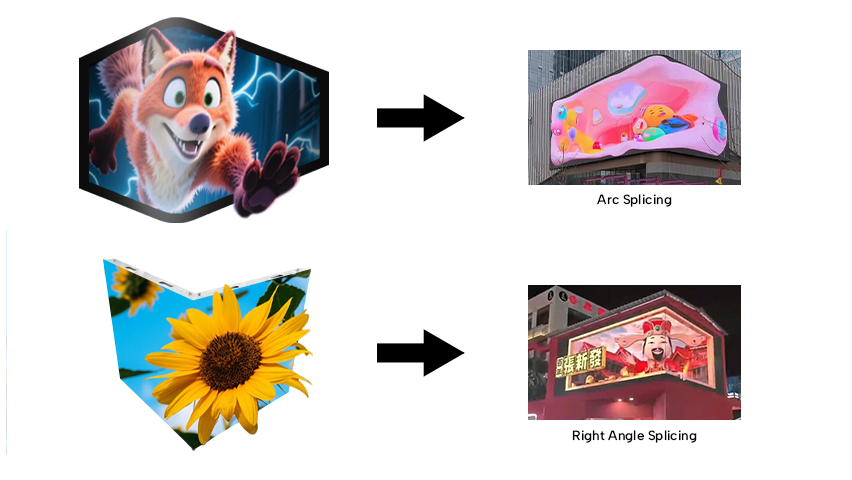Among LED display cabinet materials, aluminum and iron are common. Aluminum comes in die-cast aluminum and profile aluminum, both of which are lightweight and corrosion-resistant. Iron cabinets are popular for their strength and stability. Among these various materials, how should we choose the right material for our LED display cabinets?

Die-cast Aluminum
- Process Advantages: The core feature of die-cast aluminum is its one-piece molding. Die-cast aluminum cabinets widely serve rental and indoor fixed-mount LED displays.
- High Precision Flatness: Due to the one-time die-casting molding of the mold, no welding is required. We control the flatness tolerance to within ±0.1mm to ensure seamless splicing. As a result, the die-cast aluminum enclosure has exceptional dimensional accuracy. Resulting in a perfectly flat screen after splicing, ensuring optimal visual quality.
- Lightweight and Efficient Installation: Die-cast aluminum cabinets are significantly lighter than their iron cabinet, making them easier and faster to transport and install. A single die-cast aluminum cabinet weighs only 1/4 of a comparable iron cabinet (e.g., a 500x500mm cabinet weighs approximately 7kg). Furthermore, the quick-lock design allows for quick connection in 10 seconds, making it easy for a single person to transport and install.
- Corrosion resistance: Aluminum itself has excellent corrosion resistance. Combined with surface oxidation treatment, both die-cast aluminum and profile aluminum maintain stable performance in harsh environments such as humidity and rain. This corrosion resistance not only extends the cabinet’s lifespan but also reduces repair and replacement costs due to corrosion. We widely use it in corrosive environments such as outdoor areas and coastal areas.

Profile Aluminum
- Process advantages: Profile aluminum is made through the “extrusion molding + modular assembly” process. That is, with aluminum alloy extrusion molding as the core, standard profiles are first made, and then modularly assembled into a cabinet.
- Lightweight: Like die-cast aluminum, it maintains the lightweight advantage of aluminum. However, profile aluminum is slightly heavier than die-cast aluminum.
- Excellent heat dissipation: Aluminum itself has excellent thermal conductivity, effectively transferring heat generated by the display to the cabinet surface. Furthermore, we designed the aluminum profile with a large number of heat dissipation fins to greatly increase the heat dissipation area.This effectively reduces the internal temperature of the screen and significantly extends the life of the LEDs and driver ICs. Therefore, it is an excellent choice for outdoor displays that generate a lot of heat and operate under the scorching sun for a long time.
- Flexibility: The use of aluminum profiles enables the manufacture of cabinets in varying sizes, offering greater flexibility than die-cast aluminum. Therefore, in outdoor fixed-mount LED displays, we can customize cabinets of varying sizes,as long as the width and height are integral multiples of the module’s width and height.
Iron Cabinet
- Process advantages: The iron box adopts the “welding assembly + anti-rust treatment” process.
- Low cost: The price of iron materials is relatively stable, and the production process is relatively mature. So making the production cost of iron enclosures relatively low and the price generally more affordable. Therefore, for customers with limited budgets, iron cabinet enclosures are a very good choice.
- High strength: The iron cabinet is very strong and has a strong load-bearing capacity. Even if it carries a heavy LED display, it can maintain a stable structure and is not easily deformed or damaged.
In summary, when choosing between several materials for LED display cabinets. Die-cast aluminum enclosures, with their high precision and lightweight, are the undisputed choice for indoor and outdoor rentals. Profiled aluminum, with its flexible customization and high heat dissipation, leads the market for outdoor fixed displays. Such as outdoor advertising and commercial displays. Finally, iron cabinets, due to their low cost and high load-bearing capacity, are a common choice for fixed display projects with limited budgets.
